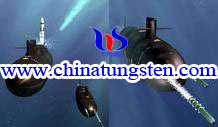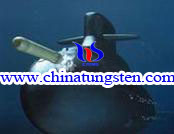Construction parts in Space Nuclear Reactors
This product relates to nuclear reactors and, more particularly, to the constructional features of containment vessels for the housing of such nuclear reactors, including safeguards for obtaining suppression of excessive pressure in the event of nuclear incidents.
Nuclear reactor systems of the pressurized water or boiling water types are generally enclosed with a secondary or vapor containment structure designed to withstand the maximum pressure buildup which might be obtained as a result of an accident within the reactor. Such accidents may be due to the rupture of the coolant line or nuclear reactor vessel, causing sudden vaporization of the water. There is also the possibility of the release of hydrogen gas due to chemical reaction of the core material and the metal cladding with the high temperature water. It is essential that such gases and vapors be contained within the nuclear reactor and the pressure be reduced so as not to exceed the limits predetermined by the structural design thereof. The safety of nuclear reactors is based on the principle that in case of an accident accompanied by the release of radioactive fission products, all contaminated gases, liquids, and solids must be contained in a leak-tight vessel until the radioactivity level has substantially decreased.
The most common solution to the problem of containment is to build a vessel around the nuclear reactor and primary coolant system of sufficient volume to hold, under moderate pressure, the flashing coolant escaping out of a major break. This concept of containment leads to very large leak-tight vessels with high material and erection costs. Different means of reducing the size and, therefore, the cost of the containment vessel have been proposed. The most promising is the so-called pressure suppression concept which is generally feasible for water-cooled nuclear reactors. The pressure suppression containment concept is based on the fact that, following an accident, the pressure of the containment vessel is reduced by quenching the escaping steam and water in a cold water pool located next to the containment vessel.
While such "pressure suppression" technique is well adapted to the boiling water reactor, it has not been used for pressurized water reactors. This is due to the fact that the primary coolant system of pressurized water reactors includes large heat exchangers located above the reactor nozzle level. This arrangement of the components of the primary coolant system makes it difficult to realize the tight layout required for the pressure suppression scheme.


It is, therefore, a primary objective of the product to provide a novel containment structure for nuclear reactors which is simple in construction and adaptable for the utilization of the pressure suppression system.
Briefly described, the present product is embodied in a novel containment structure and various constructional features thereof. It consists essentially of an outer vessel of cylindrical shape having walls made of reinforced concrete and a dome-shaped top, erected on a platform of reinforced concrete. The inner wall is lined with steel, the lining extending over the platform.
Inside the above described structure is a cylindrical housinig of a smaller diameter than the inner diameter of the vessel so that a space of annulus is provided which allows the passage of gases or steam which may escape in case of a break in the coolant system. This inner housing is divided by a horizontal floor into an upper and lower chamber. Of these, the upper chamber has a central compartment for housing the reactor proper and lateral compartments for housing the steam generator. The lower chamber constitutes a pressure suppression room, communicating through suitable inlet openings at the bottom with the annulus or space between the vessel and the reactor housing structure. A series of conduits from the reactor compartment extend downwardly and terminate near the floor of the lower chamber. The latter is filled with a suitable condensing liquid, such as water, to a level at least above that of the inlet openings, to thereby form a pressure suppression pool. In this manner, a portion of the steam or gases is brought directly from the reactor compartment in contact with the quenching water pool, but the major part of the steam flows through the annular space.
Advantageously, and as here preferably embodied, the inner nuclear reactor housing structure is constructed of reinforced concrete and the intermediate floor and the outer wall thereof surrounding the lower chamber are advantageously suitably faced with a continuous steel lining so as to be substantially gas-tight.
With the pressure suppression pool being located inside the containment vessel and the lining, in case of accident all contaminated liquids and gases will remain in the vessel itself.
The containment vessel, constructed in accordance with the product, requires little excavation and can, therefore, be built on a site where the rock bed is very near the ground grade. This is made possible by the use of an access door on the level of the floor of the lower chamber. All heavy equipment, like the nuclear reactor, steam generator, etc. may be brought into the containment vessel and skidded on the lower floor to a space where they can be lifted through temporary openings provided in the concrete floor separating the two chambers.
Tungsten alloy is a suitable material for construction parts in space nuclear reactors. So if you got any enquiry or question about nuclear reactors, please do not hesitate to contact us at sales@chinatungsten.com, sales@xiamentungsten.com. Nuclear reactors price will be offered based on size, density, quantity, hardness, and any other specific requirements.






 sales@chinatungsten.com
sales@chinatungsten.com